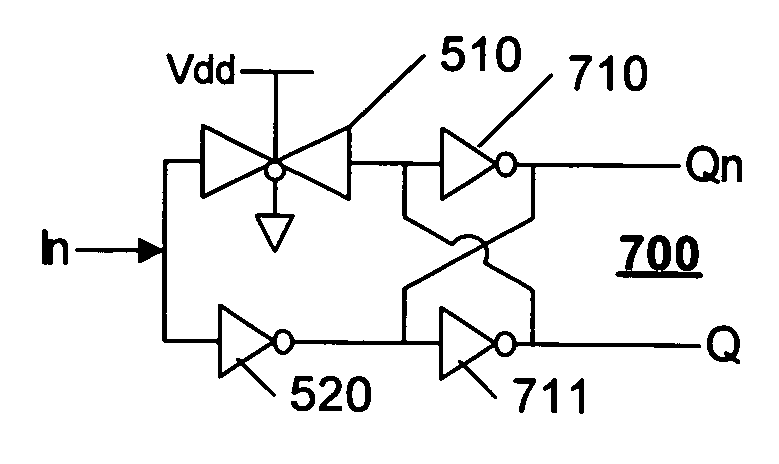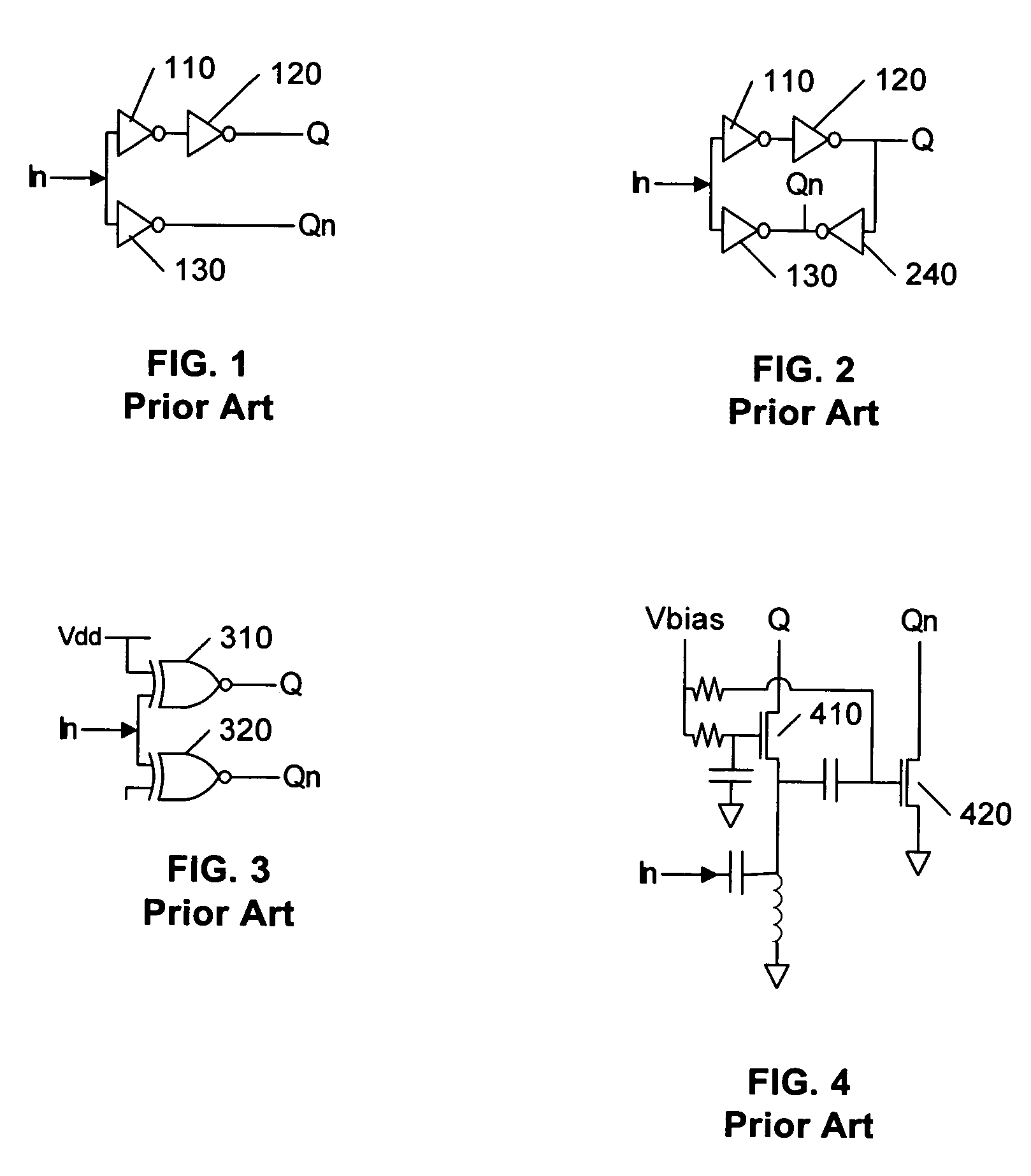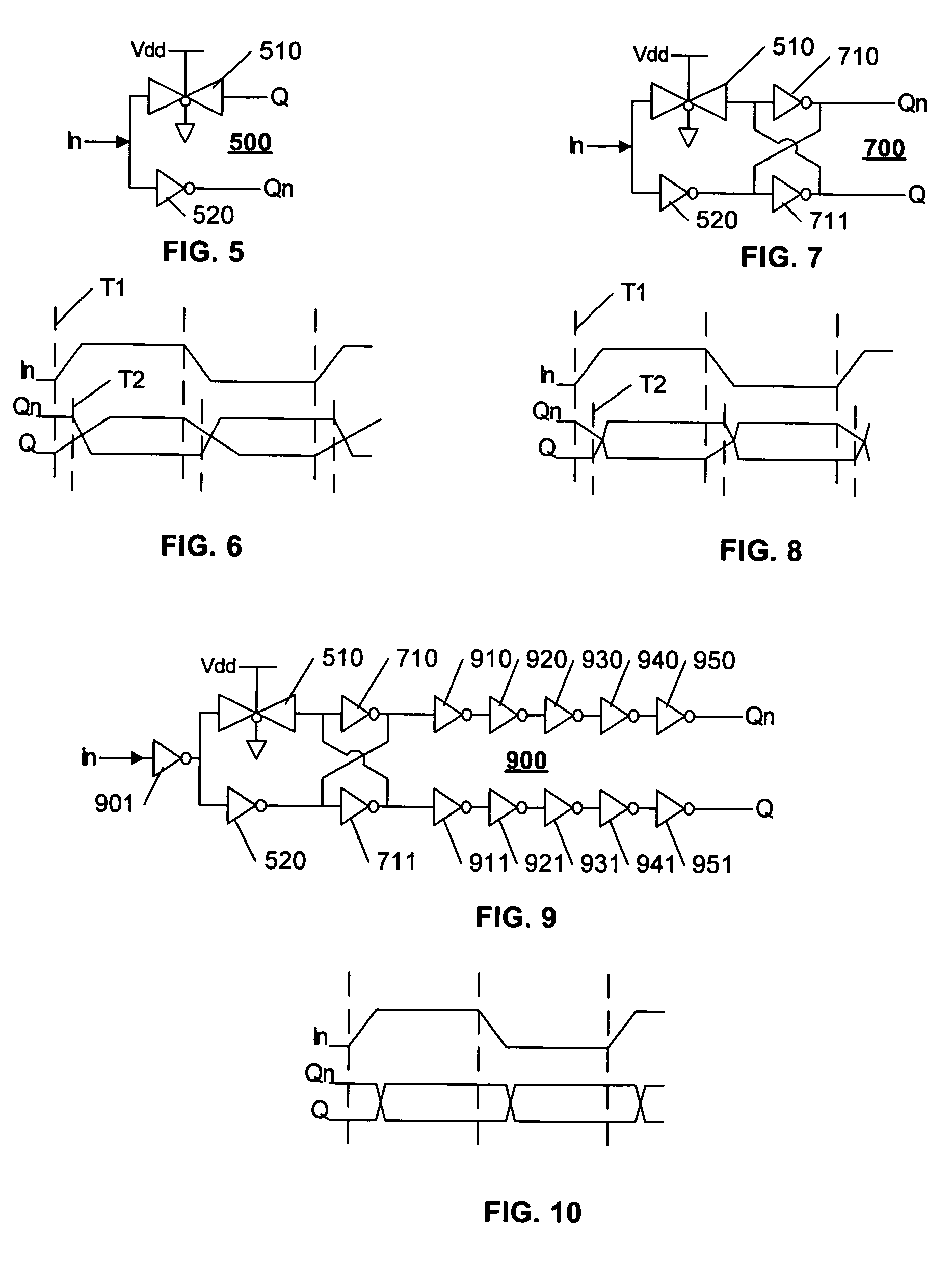Low-skew single-ended to differential converter
a converter and low skew technology, applied in the field of electronic circuits, can solve the problems of limiting the application of dynamic circuits, difficult to achieve such symmetry, and poor consistency of the circuit of fig. 2, and achieves low static power dissipation, low skew, and high output symmetry.
- Summary
- Abstract
- Description
- Claims
- Application Information
AI Technical Summary
Benefits of technology
Problems solved by technology
Method used
Image
Examples
Embodiment Construction
[0018]FIG. 5 illustrates an example single-ended to differential converter 500 in accordance with this invention. The converter 500 includes a transmission gate 510 that provides an in-phase output Q, and an inverter 520 that provides an out-of-phase signal Qn. The transmission gate 510 is illustrated as a complementary gate, with the active-high gating input tied to voltage source Vdd, and active-low gating input tied to ground. Thus, the transmission gate is always enabled to pass the input signal In to Q.
[0019]FIG. 6 illustrates an example timing-diagram of the converter of FIG. 5. Because the transmission gate 510 is always enabled, a transition of the input In at T1 initiates a virtually simultaneous transition of the output Q at T1. The inverter T2, on the other hand, is in a non-conducting state, and the output Qn exhibits a latency before the transition is initiated, at T2. As illustrated, although the transition of Q is initiated before the transition of Qn, the transition ...
PUM
 Login to View More
Login to View More Abstract
Description
Claims
Application Information
 Login to View More
Login to View More - R&D
- Intellectual Property
- Life Sciences
- Materials
- Tech Scout
- Unparalleled Data Quality
- Higher Quality Content
- 60% Fewer Hallucinations
Browse by: Latest US Patents, China's latest patents, Technical Efficacy Thesaurus, Application Domain, Technology Topic, Popular Technical Reports.
© 2025 PatSnap. All rights reserved.Legal|Privacy policy|Modern Slavery Act Transparency Statement|Sitemap|About US| Contact US: help@patsnap.com



